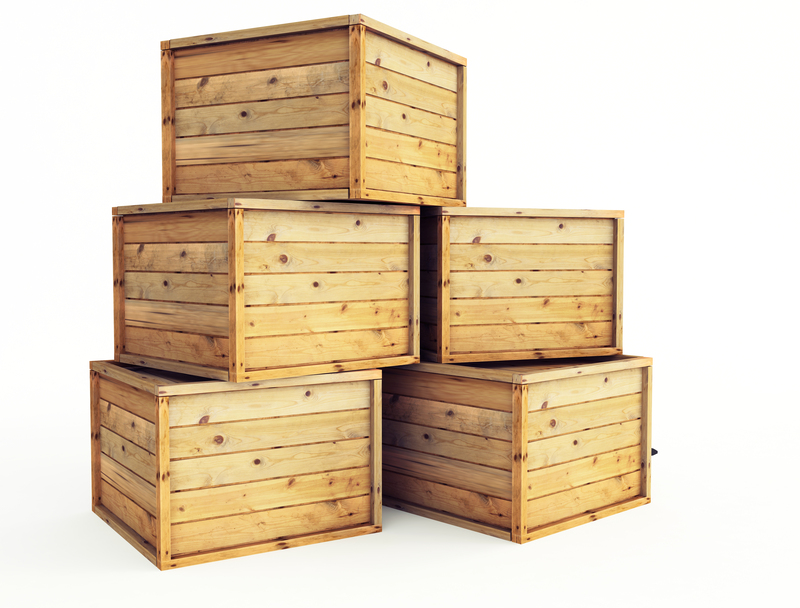Preparing Your Garden for a Move
Posted on 21/12/2024
Moving homes is often regarded as one of the most stressful life events. Among the myriad tasks involved, preparing your garden for a move can be particularly daunting, especially for garden enthusiasts who have dedicated significant effort to cultivating their outdoor spaces. This comprehensive guide will help you navigate the process, ensuring your beloved plants and garden features make a safe transition to your new home.
Why Preparing Your Garden for a Move is Important
When relocating, it's easy to prioritize indoor belongings over garden elements. However, for many, their garden is a cherished space imbued with memories and financial investment. Proper preparation can reduce plant loss, preserve the hard work you've invested, and provide a sense of continuity and comfort in your new surroundings.

Assessing Your Garden Inventory
Start by taking a thorough inventory of your garden. Identify which plants, trees, and garden features you want to take with you. This can include potted plants, specific shrubs, or even garden art and equipment. Create a list and take photographs to help you keep track of everything.
Understanding Plant Transplanting Needs
Plants can be sensitive to changes in their environment. Transplanting should ideally be done during a plant's dormant season to minimize stress. Late fall and early spring are generally good times for this, but always research the specific needs of your plants.
1. Root System Preparation
Begin preparing your plants' root systems several weeks in advance. For larger shrubs and trees, root pruning can encourage the growth of new feeder roots which makes transplanting easier. This involves cutting the roots in a circle around the plant, which encourages the plant to produce new, smaller roots.
2. Acclimatization
For potted plants, start acclimatizing them to conditions similar to those they will face during the move. This may involve moving them to a shadier spot or hardening them off if they're normally kept indoors.
Digging Up and Packing Plants
When the moving day approaches, it's time to dig up and pack your plants properly. Here's how you can minimize stress and damage to them:
1. Digging Technique
For smaller plants, dig a circle around the plant at least 8-12 inches away from the main stem. Lift the plant with as much of the root ball intact as possible. For larger shrubs and trees, this circle may need to be 12-24 inches from the main stem.
2. Moisture Management
Keep the roots moist by wrapping them in burlap or placing them in temporary pots filled with soil. Ensure they remain hydrated but not waterlogged, as too much water can cause root rot.
3. Transport Containers
Use sturdy containers to transport your plants. Cardboard boxes work well for small pots and seedlings, while large plastic containers or wheeled planters are ideal for larger specimens.
Transporting Larger Garden Features
Beyond plants, your garden may contain larger features such as fountains, birdbaths, benches, and garden art. Here's how to ensure they make the move unscathed:
1. Disassembly
If possible, disassemble features like fountains into manageable parts. This makes them easier to transport and reduces the risk of damage.
2. Padding and Protection
Use blankets, bubble wrap, and padding to protect delicate or heavy items. Secure them firmly in your moving vehicle to prevent shifting during transit.
Re-establishing Your Garden at the New Home
Once you've successfully transported your garden, re-establishing it in your new space can begin.
1. Assessing the New Garden Space
Spend time understanding the light, soil, and moisture conditions of your new garden. This will help you determine where best to place each plant.
2. Re-Planting
Follow the reverse of your digging-up process to replant your trees, shrubs, and smaller plants. Plant them at a similar depth to ensure they have the best chance at readjusting to their new environment.
3. Watering and Care
Provide adequate water and care for your transplants. Watch for signs of stress, such as wilting or yellowing leaves, and adjust care routines accordingly.
Additional Tips for a Smooth Transition
1. Labeling
Label your plants and containers clearly, noting their species and any special care instructions. This will help you stay organized and give each plant the care it needs upon replanting.
2. Timeline and Assistance
Plan your timeline carefully. Moving a garden is a time-consuming process that might require additional hands. Don't hesitate to ask friends, family, or professional movers for assistance.
3. Garden Insurance
Like valuables inside your home, your garden too contains elements of significant monetary and sentimental value. Check whether your moving insurance covers garden items or if you need special coverage.

Settling Your New Garden
Lastly, allow time for your garden to settle into its new environment. It will take a few weeks for plants to acclimate properly; monitor them closely and be patient. With due care and attention, your garden will thrive in its new home, providing a familiar haven in your new surroundings.
Conclusion
Preparing your garden for a move is undoubtedly a challenging task, requiring detailed planning and effort. However, the rewards of seeing your cherished plants and garden features flourish in your new home are well worth it. By following these comprehensive guidelines, you'll be well-equipped to tackle this endeavor with confidence.
Ensuring the safe transport and re-establishment of your garden can transform your new house into a home with an instant touch of familiarity, making the transition smoother and more enjoyable. Happy gardening, and good luck with your move!




